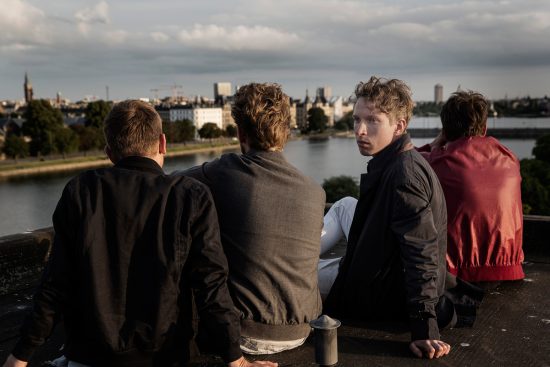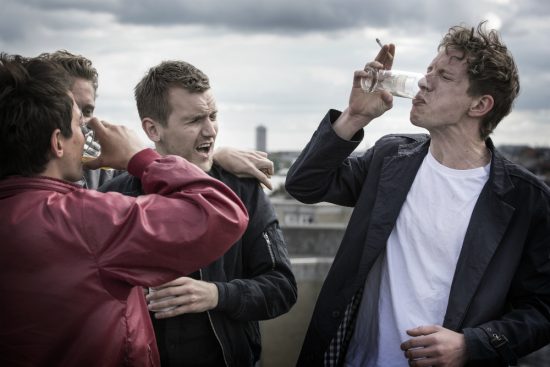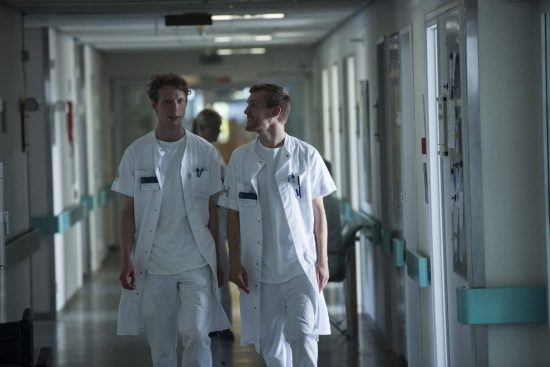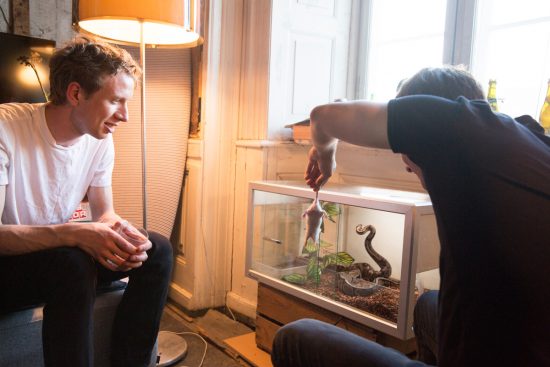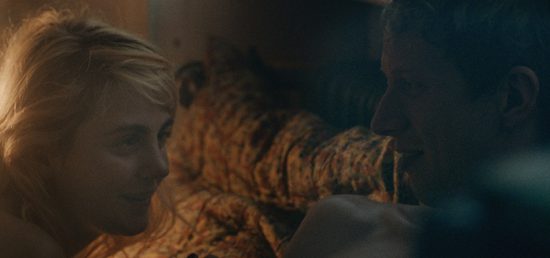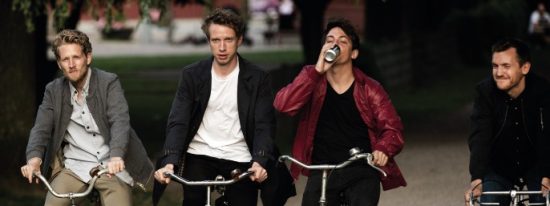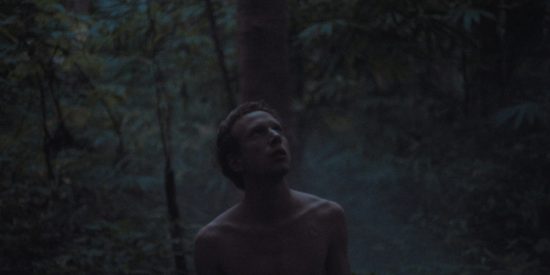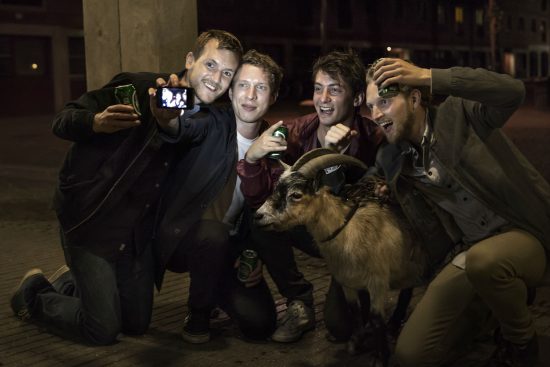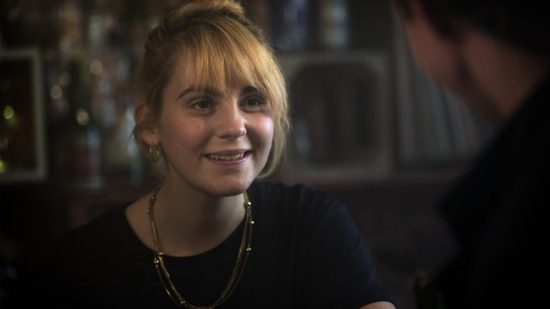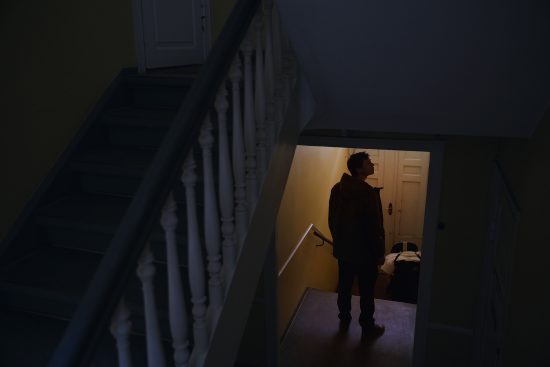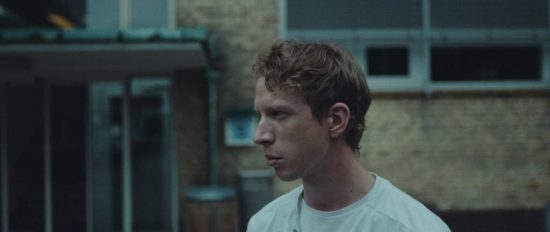Earning the Write: Rasmus Heisterberg talks about In the Blood
Trevor Hogg chats with Rasmus Heisterberg about screenwriting and making his directorial debut with In the Blood…
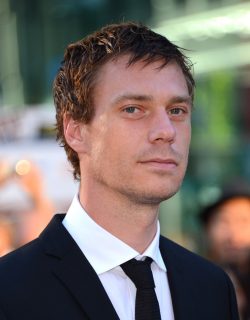
Rasmus Heisterberg
After earning international acclaim as the screenwriter for A Royal Affair and The Girl with the Dragon Tattoo, Rasmus Heisterberg decided to direct In the Blood which revolves around a group of friends sharing an apartment and their eventual breakup. “I have always gravitated towards doing something more ambitious and new every time. The same skillset is used to get the structure to work but you explore new psychology and characters. What matters in a movie is that you resonate with the characters which has always been the attraction for me as a screenwriter.” A different style was adopted for In the Blood. “I come from novel and plot-base films. One of the reasons that I wanted to direct this was that I didn’t want to have a big plot. I wanted it to be as close to the characters as possible. I’ve done so much with guns, money and suitcases which I love but there’s another side of me that likes the French New Wave.”
Every character beat has to progress the story. “They can’t be repetitive and that’s tricky because you have a conflict In the Blood which is about the dissolving of a friendship,” notes Heisterberg. “You have to have that conflict in every scene, put more and more pressure on the main character, and have him act more and more desperately. It’s about being in the moment with the characters. As a screenwriter it is fun to see how much you are able to tone things but still make it feel that everything is moving forward.” Simon portrayed by Kristoffer Bech is not an entirely sympathetic protagonist. “You don’t want to see a movie about an unflawed human being because they’re utterly boring. I respect that some people will not engage with Simon because he’s distant and cold. You have to see beyond the things that he does and connect to the thing that is not spoke of. It makes the movie narrower or smaller but also more complex and nuanced as a portrait of a person. I’ve always loved the characters in Stanley Kubrick’s films where he is uncompromising as to whether you like them or not but you’re still engaged; that’s the kind of writing I aspired to when I did this piece.”
“It’s never a matter of writing dialogue that speaks in a self-conscious way to the audience,” observes Heisterberg. “Sometimes you write one line that is so self-conscious because you want the laugh from the audience. In this case it was more a matter of making something truthful between the characters. For example, it’s a stupid banal humour between the guys; that hopefully makes us believe in their friendship instead of writing one liners which often tend to create a distance between the audience and the characters. You laugh at the joke but subconsciously know that you’re watching a movie. There’s so much going on in movies that keeps on telling you that you’re dealing with the conventions of a drama. I tried to get rid of all of that. I wanted to drift with these four guys through a summer and see how their friendship goes. It’s not about them being characters in a movie but a group of guys from Copenhagen.”
Conveying subtext is an important part of the storytelling. “How much do you want to put in there for people to understand and if it’s too much then people say, ‘They’re feeding me everything with a spoon,’” notes Heisterberg. “Writing an A Royal Affair has much of that in it. It’s a costume drama and people speak out in a different way. In the Blood was much more about looking at Éric Rohmert [My Night at Maud’s] and the old French filmmakers who did none of that.” The narrative was dictated by universal themes about life. We start out with a big sense of freedom in the absence of responsibility and that’s what makes us happy, carefree, and partying as young persons. At a certain point that freedom is not new or thrilling any more; it changes and becomes hollower because you need to know who you are and what your identity is. Somewhere in finding that identity there is another kind of freedom where the truth sets you free, love sets you free, and that’s an inner more resonating freedom. I wanted to explore a time where a character is forced to experience who he is and by doing that he gets to a new kind of freedom.”
A single ARRI ALEXA camera was used during the principal photography by cinematographer Niels Thastum. “It’s all shot at my favourite places in Copenhagen,” reveals Heisterberg. “There is no stage work. A location gives you a vitality and texture that can’t be created in the same way in the studio. Niels and I talked about the scenes and how we wanted to block them. But we never storyboarded and had a flexible approach. We wanted the scenes between the characters and the everyday moments to feel naturalistic. There should be a more expressive inner life of the character. I always loved the mix between a semi-documentary style and something that is expressive.” The camera movement and positioning reflect the mental state of the onscreen personas such as during the bicycle chase. “That was shot very rock and roll. You want to get into the chaos. I didn’t want a well-coordinated bike accident. I wanted to see the chaos of the character, how he felt and the desperation; it comes out of the blue.”
“We used five different lens sets to get various tones and atmospheres for sequences,” remarks Heisterberg. “All of the interiors were set lights and when shooting on the streets we used the natural light.” A sprawling colour pallet was adopted. “A lot of it is shot at the magic hour to underline the melancholy because that’s what Copenhagen summers are; it’s when the city comes alive and the young people come out.” Costumes consisted of second-hand clothes. “We were aiming for something that was close to naturalism. I always hate it when I see a movie and they maybe tried to wash new clothes about five times to make them look used. That was a big thing for me. Never new stuff. It reflects the messiness of life, the apartment and the characters.”
After spending a majority of the time in the city, the action shifts to the countryside. “This is a guy who wants to escape responsibility and dreams about the jungle as this secluded place where no one demands anything from him,” explains Heisterberg. “That’s his dream state of mind going into the woods in Sweden with this girl.” Simon is not entirely a lost cause. “I have a lot of hope for him. Telling the truth to his friend in the end wasn’t about him getting caught or getting found out or someone exposing him. It was reaching a point where Simon actually feels that he has to tell the truth; that for me is good character development.” Two standout scenes were happy accidents. “When you do your first film you’re obliged to be a little cocky and try stuff out. I dreaded doing the boys running at the end of the film as one long take because I wasn’t sure we would be able to pull it off. Then there is a scene at the beginning where the boys are having dinner and are eating crab claws. We shot that scene doing four takes of improvisation. All of the lines of dialogue were from the script but the guys were doing a 10 to 15-minute takes having dinner drinking wine enjoying themselves but in character.”
Casting was tough but a fun process. “All these guys and girls are newcomers,” notes Heisterberg. “You see them separately to begin with and then find out who is the great actor and actress. There were a lot who were great but when I put them together the chemistry wasn’t there. It was so much about the ensemble and friendship. I rather have four guys where I believe in their friendship rather than four individual actors who were good in their own separate ways. A lot of my casting was sitting in the waiting room before they got into the casting session watching these them meeting each other and hanging out. All of the guys have become great friends during the shoot. I made the right choice by choosing them.”
“This film has such an inner life so a lot of the sound design had to be experimental,” states Heisterberg. “You have this character set in the world of hospitals and medicine so there’s a lot of breathing and heartbeats. We used those physical sounds to describe the mental state that he’s in.” Music was scored by composers Jonas Colstrup and Jóhann Jóhannsson. “After the bike crash you have this ringtone which becomes a soundscape that goes into music. It was fun to experiment with this mix between when you hear the sound design and when you hear the actual score. I wanted the juxtaposition between the whole vibe of carefreeness found in the soundtrack and the score which is melancholy and has a sense of longing.”
The biggest challenge was having to solve everything in the moment and speak all of the time. “I wasn’t used to that,” admits Heisterberg. “I’m an introvert. I love to sit and write in my room. Suddenly every time I said ‘Cut’ there were 50 people looking me expecting that I would have an answer. That was frightening to begin with but turned out to be fun. I usually have a cup of coffee, a muffin, go back to the keyboard, and find out how to make the scene better, but you can’t do that when you’re shooting. It was good for me to go through that experience.” Working on a character driven story with a simple narrative was a pleasure. “I felt like that helped me to push emotions to the fore which I haven’t been able to do before. I want to take that and combine it with the genre school that I come from. A Prophet is an example of a film that does that really well. It has a poetic feeling to it but at the same time is such a diehard genre piece. You could go back to Apocalypse Now and even The Godfather; it’s that combination you always want to achieve. The movie gives you something more. If I can build upon this experience and the skills that I have as a screenwriter then I will have fun with my next project.”
Many thanks to Rasmus Heisterberg for taking the time to be interviewed and for more information visit the official website for In the Blood.
Trevor Hogg is a freelance video editor and writer who currently resides in Canada; he can be found at LinkedIn.

